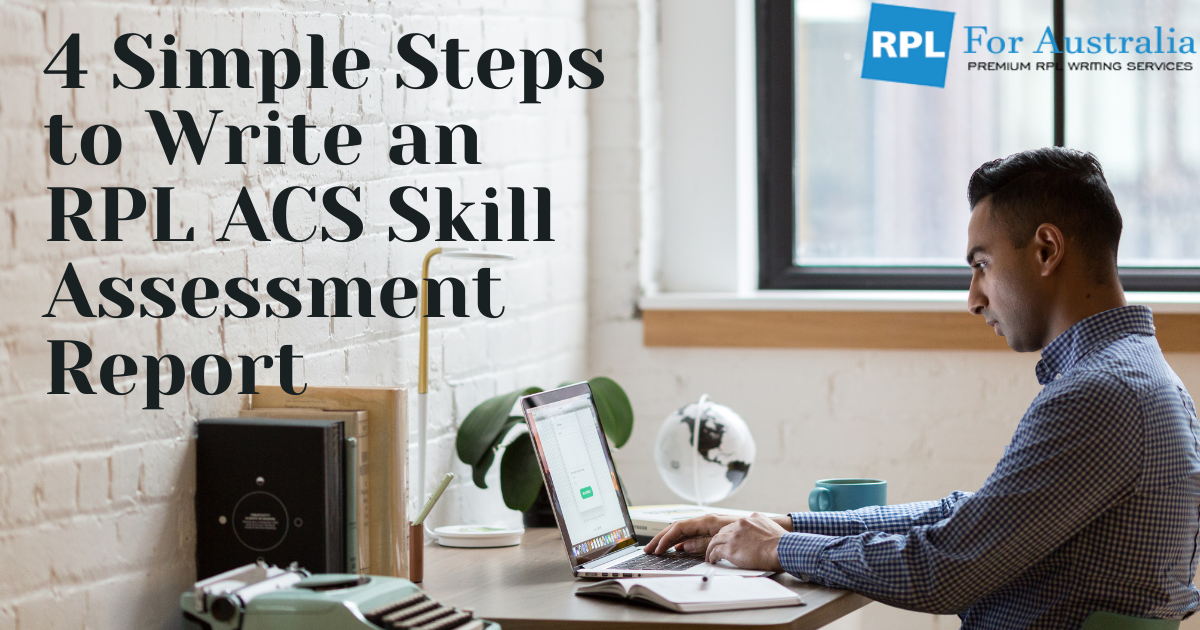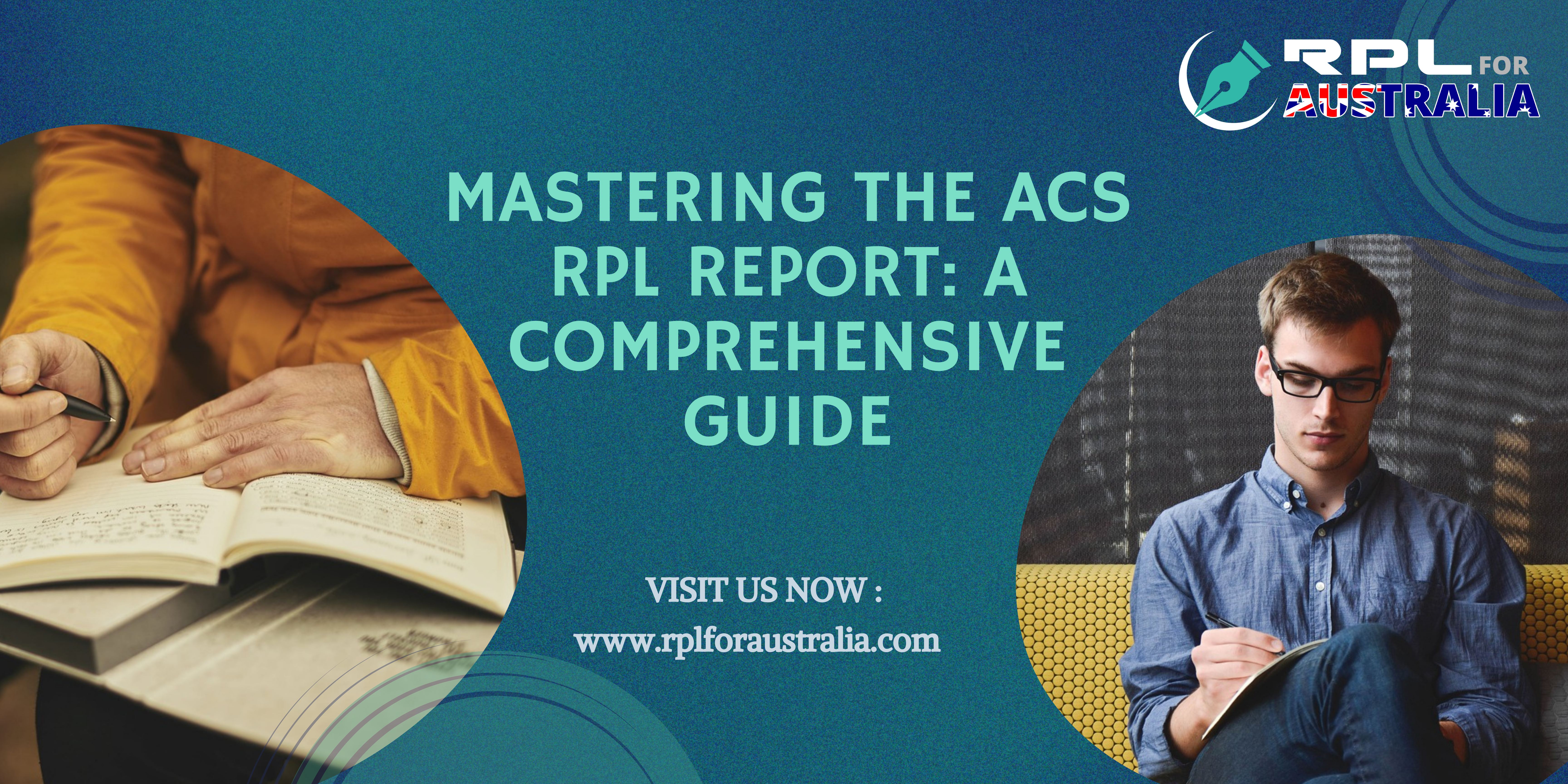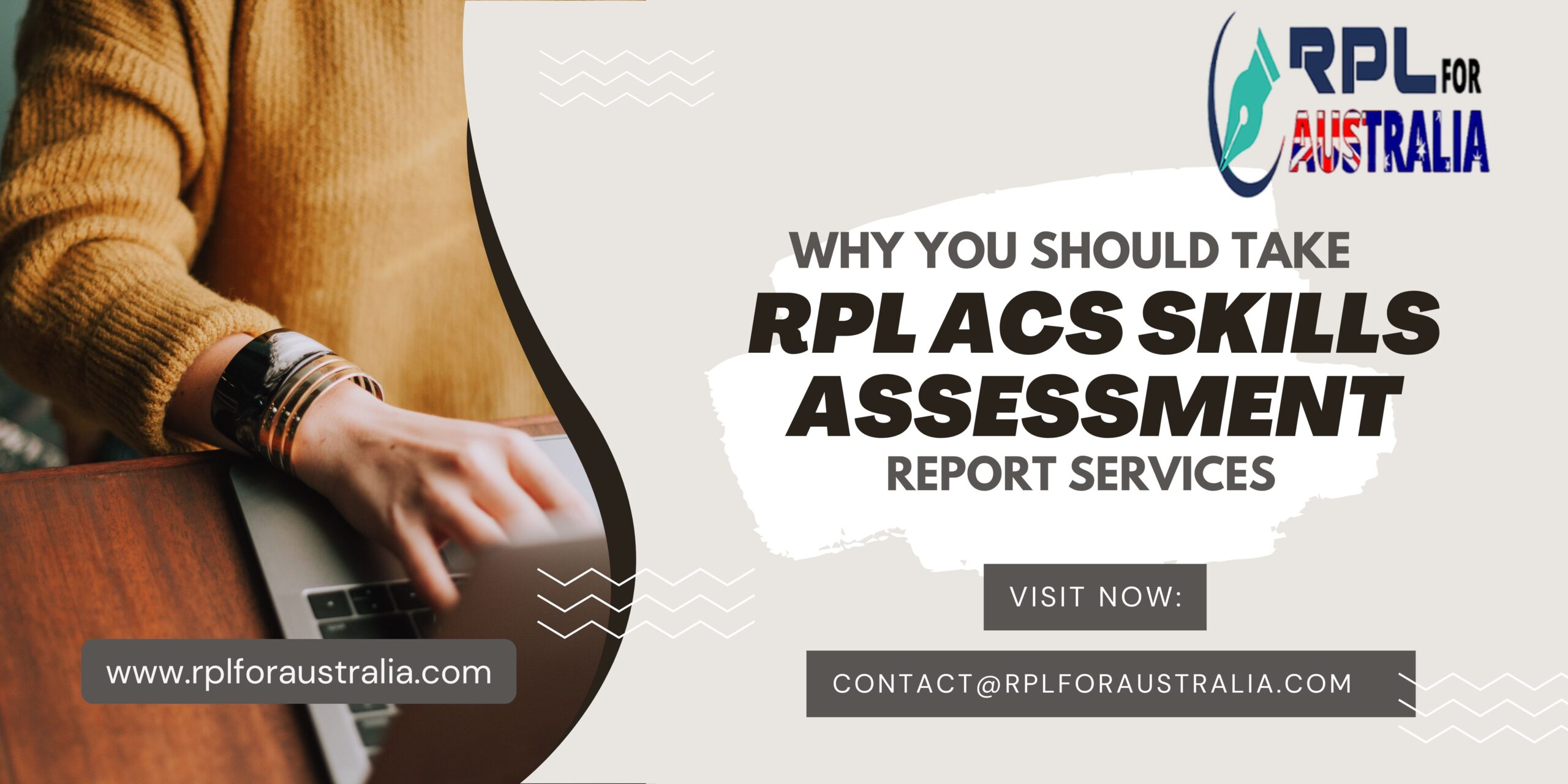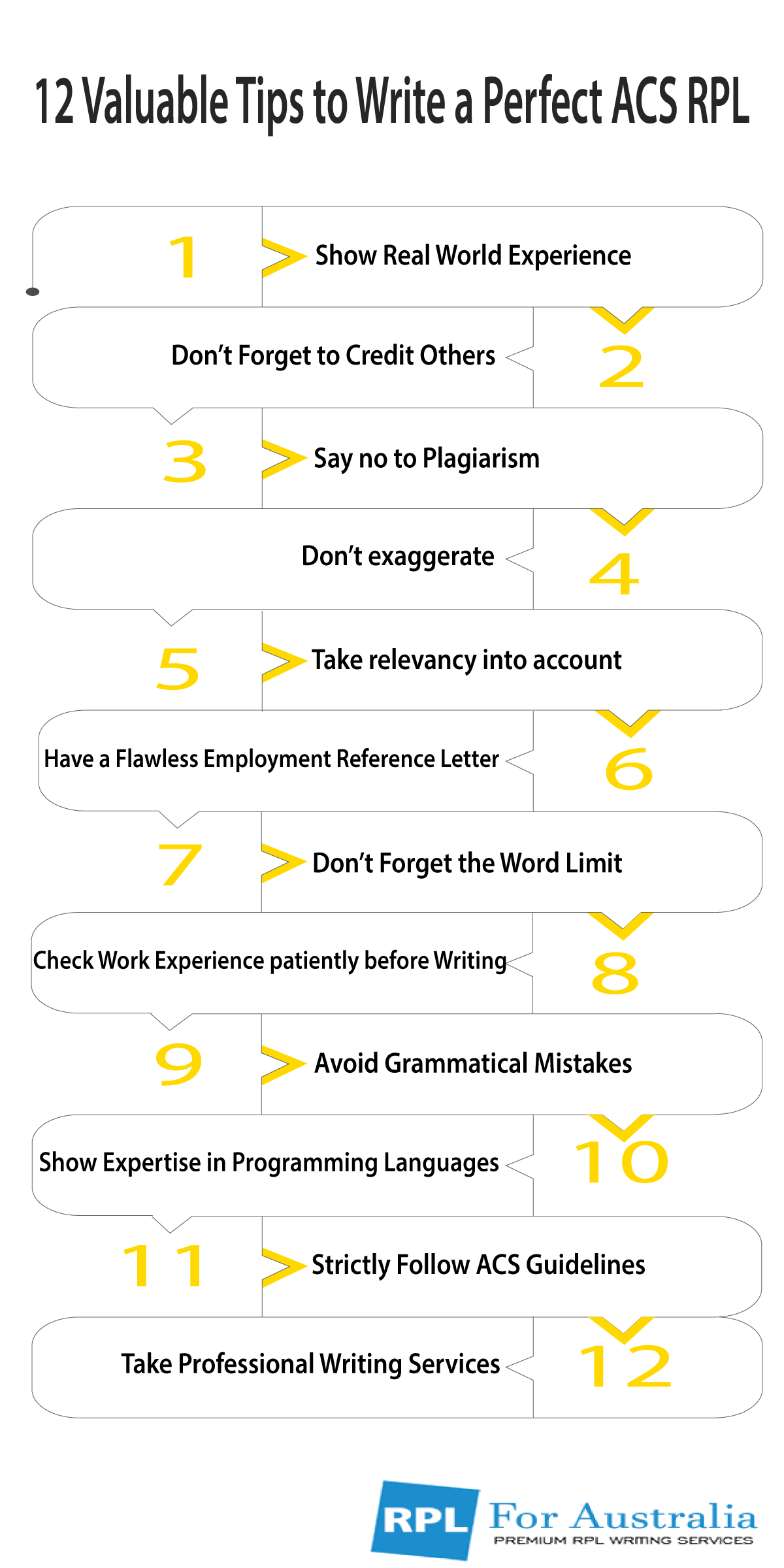Australia immigration ICT aspirants tend to be sleepless when it comes to writing a perfect RPL report for ACS Skill Assessment. They become so nervous that they can’t even follow their day-to-day tasks properly. The main reason for being nervous and stressed is the strict evaluation of the ACS board. They reject an application if finding that below their set criteria.
The only way to become successful in writing a perfect and mistake-free RPL report for a competent ICT professional is to become familiar with the guidelines and rules laid down by the authority.
Apart from that, there should not be even a minor fault in your documents. Your all documents must be valid, genuine and evidence-supporting.
Having taken such points into account with a keen desire and intention to help Australia immigration ICT professional aspirants like you, we have made a list of 4 steps to write a perfect RPL report for a positive ACS Migration Skills Assessment. So, read the whole blog attentively and gear up for an impeccable application.
Step 1
The first step to write the report is to familiarize yourself with the ACS guidelines and RPL samples:
ACS Guidelines for a Positive RPL ACS Skill Assessment:
- Your report must show the work experience you gained in real work situations. Don’t show your theoretical knowledge, as the authority is not asking for that. Apart from that, it must be free from any false information.
- Don’t forget to give credit to those whose help in form of diagrams, methods, examples and ideas helped you write the report. It is your ethical duty to credit them and ACS also requires you to do the same.
- Avoid plagiarism. The authority has advanced tools to check plagiarism, so avoid it at any cost. Although you can take reference from other online sources, copying their content is giving an invitation to plagiarism. If you are found with plagiarized content, then you will be reported to the IBP department that will ban you. Online reference materials should be used only as a guide to follow the format. Sometimes, your report may have plagiarism despite you didn’t do it intentionally. So, check it to leave no trace of plagiarism.
- Your job descriptions must show your duties and responsibilities that are in harmony with the ANZSCO job you choose. If anything is found irrelevant, your report will be rejected.
Check your Eligibility and Documents:
Two kinds of applicants can choose the RPL pathway:
- Those who don’t have ICT qualifications but have 6 years of experience as an ICT professional.
- The other one is those who don’t even have tertiary level qualifications, but they have 8 years of work experience as an ICT professional. The extra two years of experience are not compulsory to be relevant to the ANZSCO job you choose.
So, if you fall in any of the categories mentioned above with the amount of experience mentioned above, then you can apply for the RPL ACS assessment for Australia immigration. Remember the job you choose from the ANZSCO code must be relevant to the responsibilities and roles you performed.
Required documents for ACS RPL Skill Assessment:
Birth certificate or passport
Proof of name change
Resume or curriculum vitae
Education degree title/award
Work experience proofs like the employment details: start date and finish date (if still working, write ‘To date’), roles and responsibilities, work hour details ( part-time or full-time), country name where worked, names of locations of a country if worked in different locations of the same country and signed letter by the authority with their name, designation and contact details. (Don’t forget to fulfill third party statutory declaration requirements).
Choose a job from the ANZSCO occupation list:
As told above, you need to choose a job from the ANZSCO occupation list. Choose the job whose experience you have. It is because you have to show your work experience mentioning your roles and responsibilities. if your job is not relevant to the responsibilities and roles you had, then you will be considered ineligible.
Having given you an idea of what to do in the first step, now we are taking you to the second one.
Step 2
Start writing the report keeping the following in mind:
- Choose your project wisely. Choose the one allowing you to show your knowledge and skills as required in any of the ANZSCO codes you wish to apply for.
- Complete your report stating the project details, project name, the affiliated company and your own role in the projects.
- Give a clear description of the assigned responsibilities and roles you performed. You need to describe your ideas in design and development and how well they performed in bringing the desired result. You must show your plus points here.
- Clearly explain the methods you used in each project’s system analysis and design phase.
- An impressive demonstration of your programming skills by taking the names of the programming languages you used in the project is wise.
- Don’t forget to show your database management skills, which includes all of the database management techniques you used in the project.
- A crystal-clear description of project management and quality assurance techniques you used in the project development to show your managerial abilities. You must describe the project security mechanisms properly.
- In clear and simple terms, give a description of the nature and scope of your responsibilities and eligibility because they relate to ICT management.
Step 3
In the third step, you need to check and proofread your prepared report for the following:
Plagiarism
Whether intentionally or unintentionally, you can commit the mistake of plagiarism in your report. So, check it properly. Most of the candidates like you take reference from online sources and they bring some traces of plagiarism to their own document.
So, you must check for it not once. You’d better check it using different plagiarism detection tools to assure yourself.
Grammar Mistakes:
It doesn’t matter you have an excellent command of English, especially written English. It is your duty to make your report grammatical-error-free. It’s wise to take help from those having better command than you or who are related in any English writing field. A report having grammatical mistakes loses its quality. So, avoid it.
Relevancy:
As stated above, your writing must show your roles and responsibilities in a way that it gives the assessors a clear idea of your capability in a particular area of the ICT profession.
Your experience must be relevant to the job you have chosen to apply for from ANZSCO. It’s a wise act to assure yourself of the expected level of relevance.
Adherence to the ACS guidelines:
Proofread and check if ensure that you have properly followed the guidelines given by the ACS authority. It doesn’t matter how well you describe your professional journey and skills if you are not in harmony with the ACS guidelines, then your report will give you the desired result.
Word Limit:
Remember you have to write your RPL report in a concise, clear and vivid way. There are some word limits for each project description.
If you cross your word limit, then ACS doesn’t have enough time to pay attention to your unwanted story. So, make sure that you don’t cross your word limit.
Step 4
Don’t forget to get your RPL report assessed by an RPL report writing professional. If you forget to do so, then you will lose the following benefits:
- Their expertise and experience help them prepare your report perfectly.
- Their grammar expertise and writing skills help them create a wonderful report in less than expected time without any compromise in quality.
- They will complete and deliver your report on time, which will allow you to submit it on time.
- They can work under pressure without committing mistakes, as they are used to such pressure.
- They are much better familiar with the ACS guidelines than a common person. So, they fulfill all the requirements laid down in the ACS guidelines.
If you need further information about the RPL ACS Skill Assessment, ask us freely.
Summary
Here, we told you about the 4 simple steps to write an RPL ACS skill assessment report. These steps are preparation by knowing the guidelines of ACS and all documents prepared, writing the report, checking it for plagiarism and other things and getting it reviewed by a professional.








